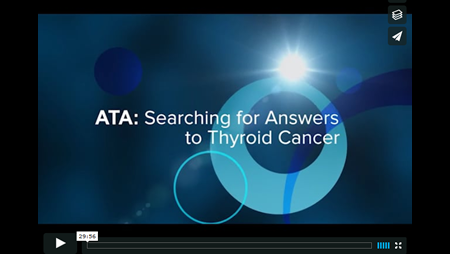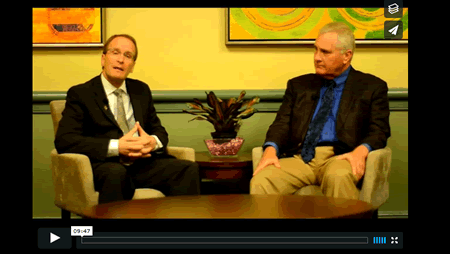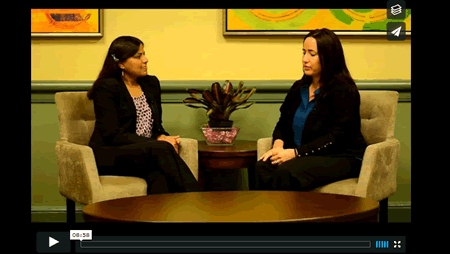Clinical Thyroidology for the Public summarizes selected research studies discussed in the previous month’s issue of Clinical Thyroidology, an official publication of the American Thyroid Association. Editor-in-chief, Alan Farwell, MD, FACE
Volume 11 Issue 5
Available in pdf format for saving and printing and Web page format for viewing online
PDF Format for Saving and Printing
Clinical Thyroidology for the Public Volume 11 Issue 5 (PDF file, 5.58 MB)
TABLE OF CONTENTS – Web Format
THYROID CANCER Selenium may protect salivary glands from radioactive iodine therapy for
thyroid cancer
Salivary gland damage is a known complication of radioactive iodine therapy. Unfortunately, we still not have an effective treatment to protect salivary glands from the radiation. Selenium is a known antioxidant that has shown to decrease side effects of radiation therapy in other cancers. In this study the authors explore the role of selenium in preservation of salivary glands function after radioactive iodine therapy.
Son H et al Effect of selenium supplementation for protection of salivary glands from iodine-131 radiation damage in patients with differentiated thyroid cancer. Hell J Nucl Med. 2017 Jan-Apr;20(1):62-70.
(PDF File for saving and printing, 722 KB)
THYROID CANCER Radioactive iodine therapy and pregnancy in women
In women, radioactive iodine therapy has been associated with irregular menstrual cycles, earlier menopause, and problems with future fertility and delayed pregnancy. In women, one way of measuring ovarian reserve (i.e. the ability to achieve a pregnancy) are blood levels of anti-Mullerian hormone (AMH). This study was done to examine the changes in blood AMH levels among women with thyroid cancer who receive radioactive iodine therapy.
Yaish I et al. A single radioactive iodine treatment has a deleterious effect on ovarian reserve in women with thyroid cancer: Results of a prospective pilot study. Thyroid. 2018 Feb 21. doi: 10.1089/thy.2017.0442. [Epub ahead of print]
(PDF File for saving and printing, 611 KB)
THYROID SURGERY Risk of hypoparathyroidism after total thyroidectomy
The most common cause of hypoparathyroidism is damage to the glands during thyroid surgery. While rare, permanent hypoparathyroidism continues to be a real, clinical problem after thyroid surgery. Only a few studies have tried to report the risks of hypoparathyroidism. The first paper reports on post-surgical hypoparathyroidism in children, while the second paper focuses on adults.
Nordenström E et al 2018 Permanent hypoparathyroidism after total thyroidectomy in children: results from a national registry. World J Surg. Epub 2018 Feb 22. PMID: 29470698.
(PDF File for saving and printing, 617 KB)
THYROID NODULES Calcifications on thyroid ultrasound do not necessarily represent thyroid cancer
One of the most important ultrasound features of cancer is the presence of calcifications, especially microcalcifications, in a thyroid nodule. The presence of microcalcifications on an ultrasound is felt to be highly suggestive of thyroid cancer. Since calcifications can also be seen in benign thyroid nodules, the aim of the current study was to examine whether ultrasound calcifications truly predict a) calcifications in thyroid tissue itself and b) the diagnosis of papillary thyroid cancer.
Bilici S et al Histopathological investigation of intranodular echogenic foci detected by thyroid ultrasonography. Am J Otolaryngol 2017;38:608-13. Epub July 5, 2017.
(PDF File for saving and printing, 664 KB)
THYROID CANCER Extent of initial surgery may impact overall survival, even in low-risk
papillary thyroid cancers
Papillary thyroid cancer is the most common type of thyroid cancer and overall has an excellent prognosis. Previous studies showed conflicting evidence regarding the impact of the extent of surgery on overall survival and the risk of death in patients with low risk thyroid cancer. The goal of this study was to examine whether overall survival is affected by extent of surgery for papillary thyroid cancer when categorized by cancer size.
Rajjoub SR et al 2018 Thyroid lobectomy is not sufficient for T2 papillary thyroid cancers. Surgery. Epub 2018 Feb 13.
(PDF File for saving and printing, 739 KB)









